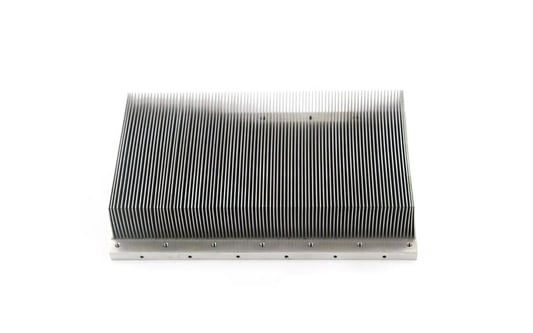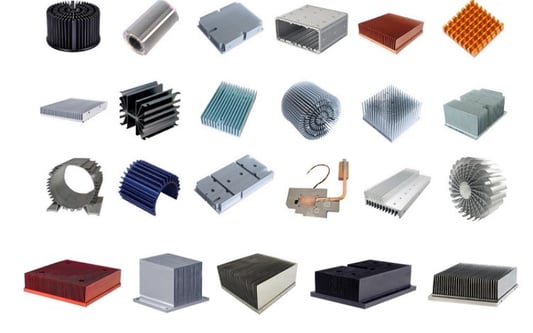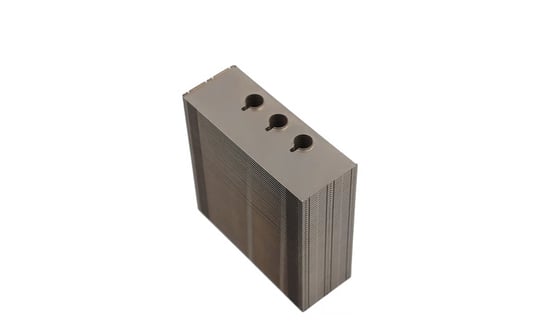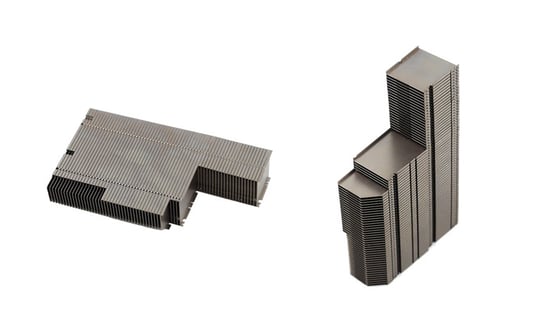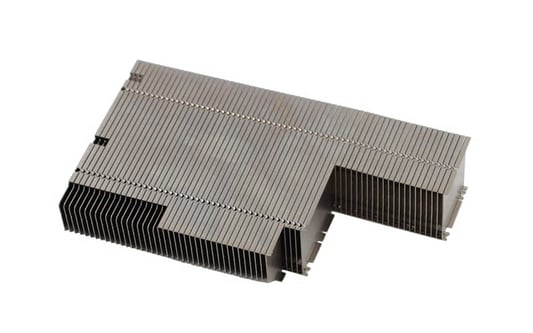Efficient Heat TransferOne-piece skived fin design in heat exchangers offers highly efficient heat transfer due to its extended surface area and intricate geometry. The fins are carefully skived from a single piece of material, allowing for maximum contact with the fluid or air passing through the system. This design ensures that heat is transferred quickly and effectively, leading to improved overall performance of the heat exchanger.Durability and Longevity The one-piece skived fin design is known for its durability and longevity. By using a single piece of material for the fins, there are no weak points or joints that could potentially fail over time. This design choice results in a heat exchanger that is robust and capable of withstanding harsh environmental conditions, making it a reliable choice for industrial applications.Compact and Lightweight One-piece skived fin design allows for the creation of compact and lightweight heat exchangers. The fins can be made very thin without sacrificing strength, resulting in a more efficient and space-saving design. This is particularly beneficial in applications where space is limited, such as in automotive cooling systems or electronic devices.Enhanced Heat Dissipation The unique shape and structure of one-piece skived fins ensure enhanced heat dissipation. As heat travels through the fins, it is dispersed more evenly and effectively, preventing hot spots and improving overall thermal performance. This results in a more efficient cooling process and helps to maintain optimal operating temperatures in various applications.Customizable Designs Manufacturers can easily customize the design of one-piece skived fins to meet specific heat transfer requirements. This flexibility allows for the creation of heat exchangers that are tailored to the needs of different industries and applications. Whether it's optimizing surface area, fin density, or material choice, the design can be adapted to maximize performance.Improved Fluid Flow One-piece skived fin design also helps to improve fluid flow within the heat exchanger. The fins are strategically positioned to promote smooth and efficient movement of the fluid or air, reducing pressure drop and energy consumption. This results in better overall system performance and lower operating costs in the long run.Resistance to Corrosion The materials used in one-piece skived fin design are often chosen for their excellent corrosion resistance properties. This ensures that the heat exchanger can withstand exposure to corrosive environments without deteriorating over time. The longevity of the system is increased, and maintenance requirements are reduced, saving time and money.Energy Efficiency Due to its high heat transfer efficiency and improved fluid flow characteristics, one-piece skived fin design contributes to overall energy efficiency. Heat exchangers utilizing this design require less energy to operate, resulting in lower energy costs and reduced environmental impact. This makes them a sustainable choice for many applications.Easy Installation and Maintenance One-piece skived fin design simplifies the installation and maintenance of heat exchangers. The single-piece construction reduces the number of components and potential points of failure, making it easier to assemble and service the system. This can lead to shorter downtime during maintenance and lower overall maintenance costs.Cost-Effective Solution Despite offering numerous advantages, one-piece skived fin design remains a cost-effective solution for heat transfer applications. The efficiency, durability, and energy-saving benefits of this design contribute to a high return on investment over the lifespan of the heat exchanger. This makes it an attractive choice for industries looking to optimize performance while managing costs effectively.Quote Inquirycontact us


